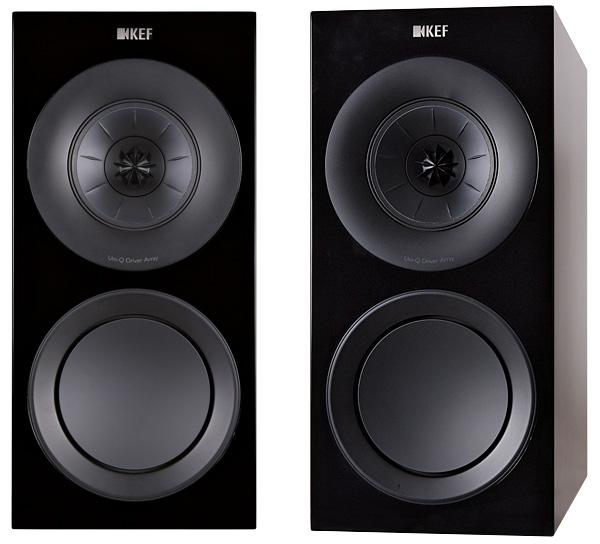KEF R3 loudspeaker

 KEF says 1000+ changes have gone into its new R Series, so how does this translate to the only standmount loudspeaker in the lineup? We listen to what the R3 has to say...
KEF says 1000+ changes have gone into its new R Series, so how does this translate to the only standmount loudspeaker in the lineup? We listen to what the R3 has to say...
Who needs shifts in the weather when you can judge the time of year by hi-fi launches? Those of us who exist in the twilight world of hi-fi reviewing, and are strangers to Vitamin D, didn't need a chill in the air and the first signs of yellowed leaves swirling around to know it was autumn – instead, a flurry of press releases announced new or revamped speaker ranges, as the big names prepared for another season of long evenings and hunkered-down listening.
This year Bowers & Wilkins kicked things off with its new entry-level 600 series, closely followed by Wharfedale's budget D300 models. Now comes KEF's revamped R series, represented here by the only standmount in the range, the £1300 R3. Available in a choice of three finishes – light walnut as well as trendy black and white gloss – the speakers may look like familiar fare from Maidstone, but in fact are all-new, the company claiming no fewer than 1043 adaptations were made in creating the range.
Not Just A Trim
Replacing the original R models, launched some seven years ago, involves not just new drivers, including the 12th generation of KEF's celebrated Uni-Q coaxial driver [see KH's Sidebar], but also a rethink of both enclosure and reflex ports, adopting technology from both the company's Reference series and the acclaimed LS50 model [HFN Jul '12 & Oct '17].
Six speakers make up the range, with three floorstanders sitting above the R3. The R5 is £2000 a pair, the R7 £2600 and the range-topping R11 £4000, while the 'new R' offering is completed with a dedicated centre speaker, the £850 R2c, and upward-firing Dolby Atmos add-on speakers, the £800 R8a. The wedge-shaped 'effects' speaker, designed to be used atop one of the other models or wall-mounted, is the only two-way design in the range, using a 13cm Uni-Q array complete with 25mm tweeter. All the other models combine the Uni-Q with at least one dedicated bass driver (or four in the case of the top-end R11).
In the R3, the Uni-Q solution is a 12.5cm unit, again with that 25mm tweeter at the centre, and this is backed up with a 16.5cm bass driver handling frequencies below about 400Hz. A common theme across all the latest R series speakers is the use of KEF's 'Shadow Flare' surround on the Uni-Q driver, described as 'more than just a trim ring… a precision-designed surface that extends the waveguide effect of Uni-Q. The tweeter no longer has line of sight of the cabinet edges, creating a “shadow region” at the points where the potential for diffraction is highest, minimising the acoustic impact to negligible levels'.
Derived from the company's Reference Series speakers, this gently contoured surface around the Uni-Q driver is said to improve clarity, particularly 'when it comes to the subtle nuances of plucked strings and percussive sounds'.
The bass driver, meanwhile, uses a diaphragm of two-part construction, combining a shallow concave aluminium layer over a paper cone to add stiffness, while the design is said to reduce resonances, enhance pistonic movement and thus reduce distortion. The motor system has also been redesigned to achieve a more uniform magnetic field.
Constrained layer damping, originally conceived for the LS50, and a new approach to bracing, combine here to help 'dial out' the effect of the cabinet on the sound. Furthermore, the flexible port tubes are the result of computer modelling and extensive auditioning, and the crossovers are mounted on separate boards that are decoupled from the main cabinet structure to reduce vibration effects.
Under The Grilles
Read deeper into the design of the R series and you uncover some more of those '1000+ changes', though I must admit I did skimp a bit when it came to counting them all as part of this review! Worthy of note, however, is the quality of the microfiber grilles supplied with the speakers, so often a 'leave them in the box' thing for reviewers. The R3's grilles don't just attach magnetically, for a clean look when removed – more or less a given these days – but are of a 13-layer construction giving a high quality finish, and with what I am told are '1801 precision-cut holes for each driver', arranged in a circular pattern over each unit. It was notable that the effect of fitting these grilles, which in other designs can bring some softening of the sound, was inaudible.
























































